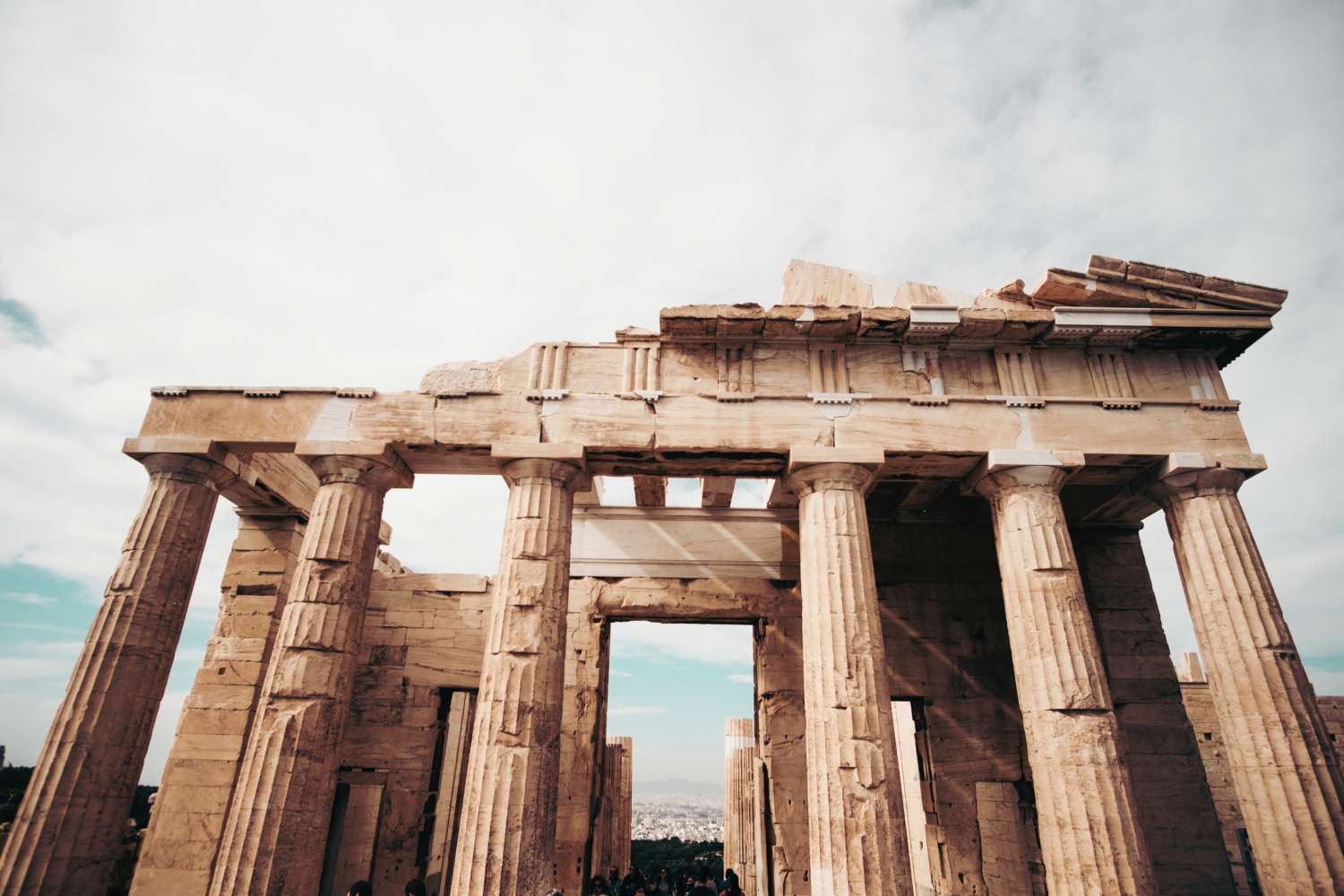Athens is awash with ancient wonders, from theaters and temples to the mighty Acropolis. The world of Greek mythology can be closely tied to many of these sites. Understanding the backstory before visiting in order to get a vivid impression of their significance sparks the imagination of children and adults alike. Here are our top four myths to prepare for a visit to Athens.
If you are interested in learning more about Greek myths prior to a visit to Athens, why not ask an expert? Context Learning brings Greek history, art, and culture to life in live, scholar-led virtual seminars and courses.
1. Athena and Poseidon compete over patronage of Athens
Site: Erechtheion
While the East Pediment of the Parthenon depicts the dramatic moment of the birth of Athena, the West pediment celebrates her victory in the contest with Poseidon for control of Athens and Attica. The first king of Athens, King Cecrops, set out a competition to establish a patron deity for his city state. Athena and Poseidon both desired to be the patron of the Athens, and to settle the rivalry a contest was suggested, the winner of which would come up with the best present to the city. When Poseidon struck the Acropolis with his trident he created a salt-water well, the so-called “sea” of the Erechtheion, which lay inside the temple, and is said to make sounds of waves whenever the wind blows from the south. Athena in her turn thrust her spear to the ground, and a fruitful olive tree appeared. In the end Athena was chosen as the winner, while the temple Erechtheion was build to soothe raging Poseidon and prevent him from flooding the city.
2. Athena is born out of the head of Zeus
Sites: Acropolis and Temple of Hephaestus
Zeus was quite notorious for his insatiable nature when it came to amorous adventures. For some time Zeus pursued and finally seduced Titaness Metis, impregnating her with Athena. Zeus, having been previously warned by Oracle of Gaea that Metis’ second child would be a boy who would overthrow him (as had happened to Zeus’ father and grandfather), swallowed Metis with Athena inside. After a while, Zeus developed an enormous headache, and howled so loud that the whole Earth could hear him. The other gods came to help him, and Hephaestus – the blacksmith god, struck Zeus’ head with his hammer, out of which Athena, in her full gown and armour, emerged. The Temple of Hephaestus is situated overlooking the Agora, a marketplace of ancient craftsmen. The east pediment of the Parthenon in Athens’ Acropolis is decorated with the plasterwork showing the birth of Athena, who later became a patron of the city (see myth 1, above).
3. Zeus cheats on Hera
Site: Temple of Zeus
Zeus had numerous love affairs before and after his marriage to his sister Hera. He had affairs with goddesses, Titaness, nymphs and mortal women including Demeter, who bore him Persephone, Mnemosyne, who created the twelve Muses, and the mortal Alcmene, mother of Heracles. Hera raged with constant jealousy and directed her anger at Zeus, his offspring and his mistresses. She was the one who incited the Titans to tear Zeus’ son Dionysus apart, and she was the one who drove Heracles mad so that he killed his beloved wife and children. Despite his reputation among the deities, Zeus was worshipped by mortals, and in Athens, though only a few columns remain of the the Temple of Olympian Zeus, it’s still possible to imagine the colossal structure in its full glory — a fitting tribute to the king of the Olympian gods.
4. Birth of Dionysus
Site: Theater of Dionysus
Dionysus was the son of Zeus and Semele, a mortal who was famous for her extraordinary beauty and grace. Zeus was deeply in love with Semele, and to please her, he swore upon the sacred river Styx to make her every dream come true. However, Semele was persuaded by a vengeful Hera to ask Zeus to come in his true godly form. It saddened Zeus, who knew that a mortal who sees a deity in all his glory was cursed to die, but, having made the promise to Semele to fulfil her every whim, he was left with no choice. He appeared in his natural form and immediately the beautiful Semele was wrapped by fire, burning her body to death. Zeus, however did manage to rescue Dionysus by stitching the foetus into his thigh to hold him until he was ready to be born. The Theater of Dionysus sits on the south slope of the Athenian Acropolis. Dating back to the 4th century BC, the structure could seat a staggering 17,000 spectators, and was used to host festivals in honor of Zeus and Semele’s tragic love-child. Indeed, the advent of the theatrical genre of tragedy is largely attributed to ancient Greek playwrights, undoubtedly inspired by the dramatic misadventures of their deities.













